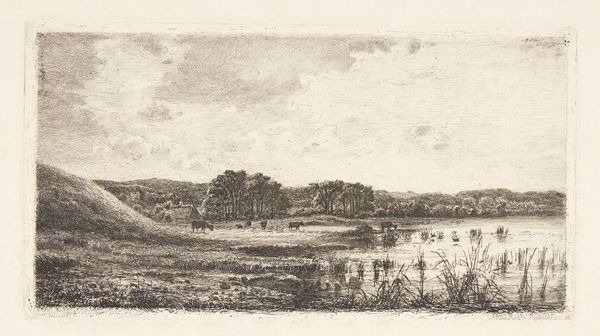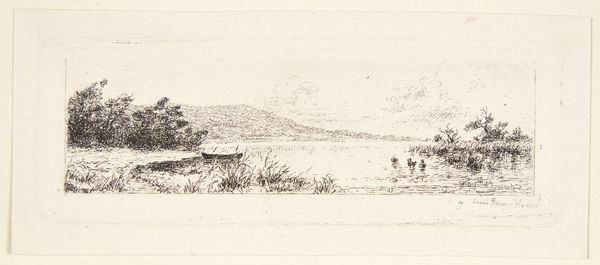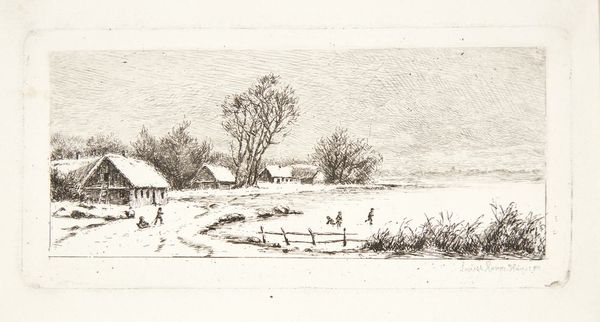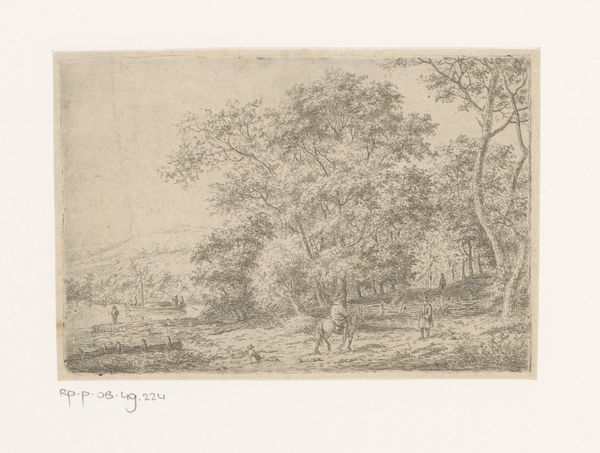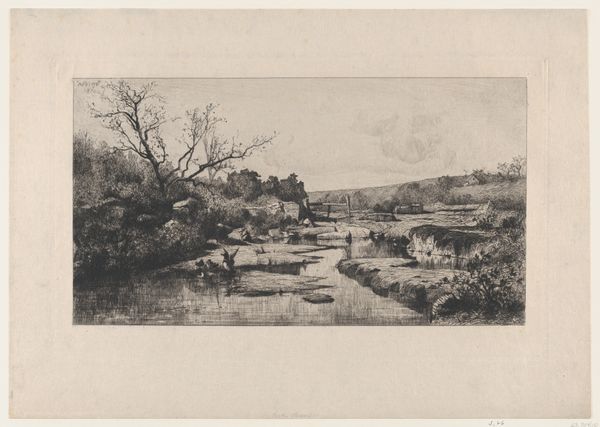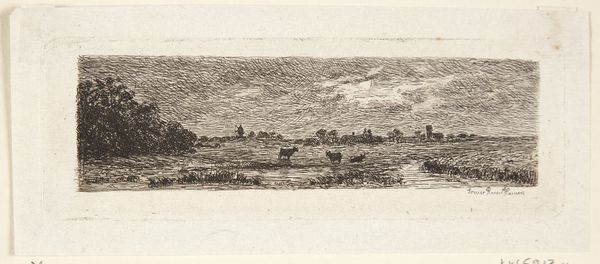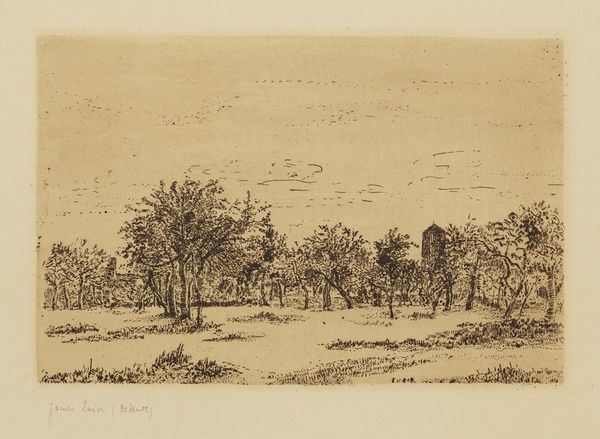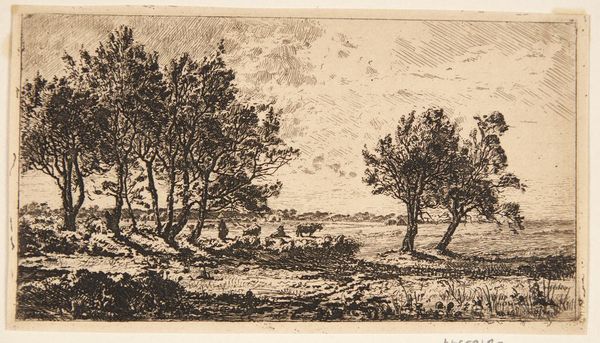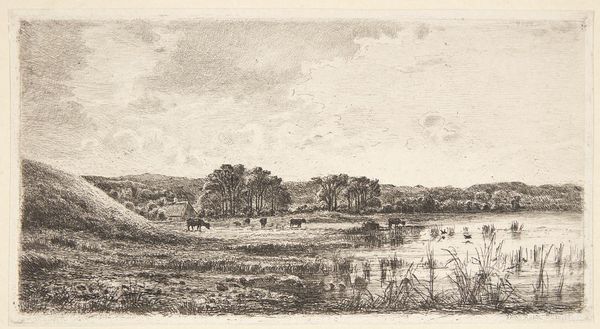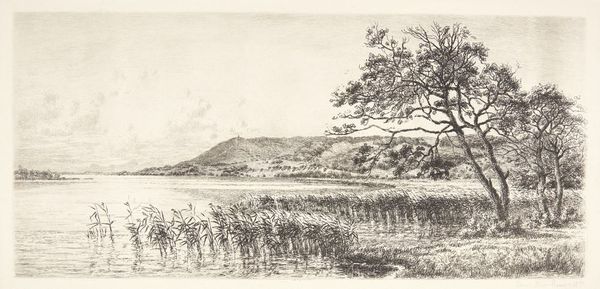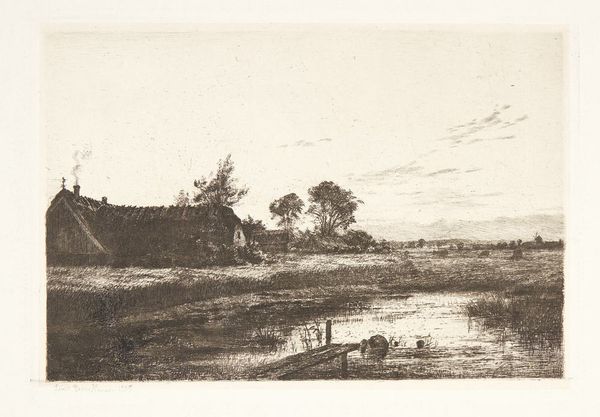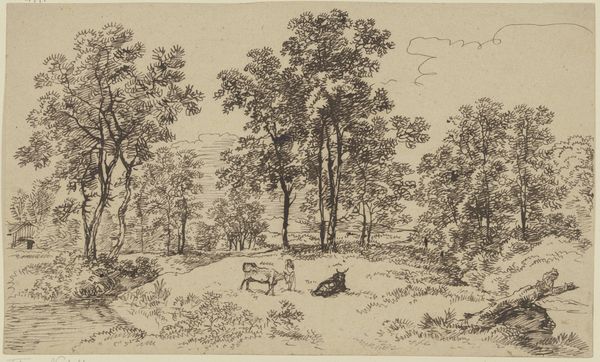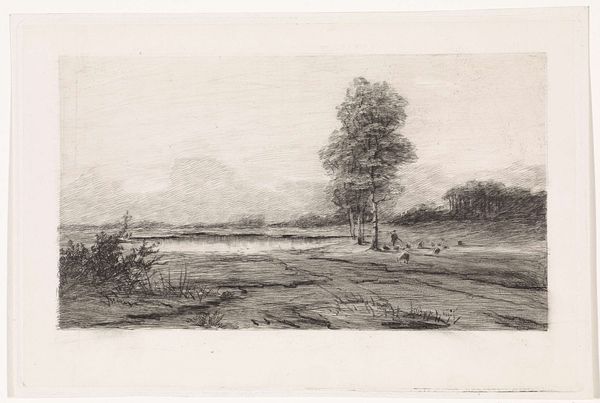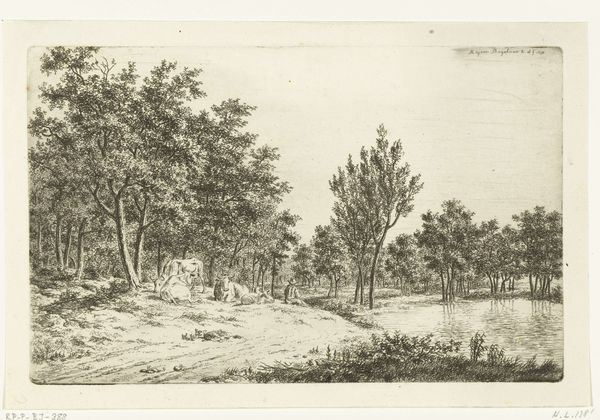
Dimensions: 65 mm (height) x 100 mm (width) (plademål)
Editor: So, this is "Strandmøllen," an etching by Louise Ravn-Hansen from 1897. It's a pretty quiet, pastoral scene... What strikes you about it? Curator: This etching, seemingly simple, actually speaks volumes about the changing roles of women artists in the late 19th century. We need to ask ourselves, what spaces were considered acceptable for women to occupy, both physically and creatively? Ravn-Hansen, by depicting a landscape – a genre often associated with male artists and ideas of ownership and exploration – she's subtly challenging those patriarchal norms. Do you see any elements within the composition itself that might reinforce or perhaps even question that idea of female space? Editor: Hmm, the scene does feel enclosed somehow, almost domestic in its scale. Maybe the fence and the small body of water contribute to that feeling? It’s definitely not some vast, sublime vista. Curator: Precisely! And consider the workers in the field, likely engaged in agricultural labor. By including them, Ravn-Hansen inserts a social commentary into the landscape. It prompts us to think about labor, class, and the relationship between humans and the land. What stories might these figures be telling? Whose voices are often omitted from art historical narratives? Editor: I hadn't really thought about it like that. I was just seeing a pretty landscape, but you’re right, there's so much more going on when you look at it through that lens. Curator: Art isn't created in a vacuum. Examining its historical context helps us understand its resonance, both then and now. This seemingly quiet image whispers of social change and the evolving role of women within a patriarchal society. Editor: I will definitely be paying closer attention to those undercurrents in landscape art from now on. Thank you for pointing all that out. Curator: It is my pleasure. Always consider how artwork, especially something as ostensibly benign as a landscape, speaks to larger issues of identity and power.
Comments
No comments
Be the first to comment and join the conversation on the ultimate creative platform.
